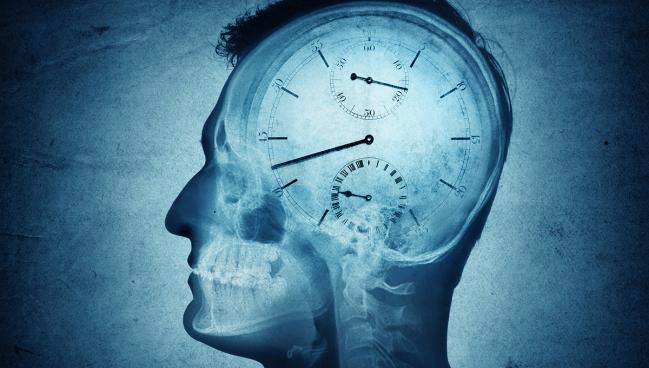Speedier Anticoagulation Reversal Tied to Better ICH Outcomes
The study provides evidence that “time is brain” for anticoagulation-associated intracerebral hemorrhage, too.

PHOENIX, AZ—Much like in the setting of acute ischemic stroke, shorter times to treatment are associated with better outcomes in patients with anticoagulation-associated intracerebral hemorrhage (ICH), according to a registry-based analysis.
Patients who received a reversal agent within 60 minutes of hospital arrival were less likely to die in the hospital or to be discharged to hospice care compared with those with longer treatment delays (adjusted OR 0.82; 95% CI 0.69-0.99), Kevin Sheth, MD (Yale School of Medicine, New Haven, CT), reported last week at the International Stroke Conference.
It’s well established that more-rapid treatment improves outcomes among patients with acute ischemic stroke, but evidence is less robust for patients with anticoagulation-associated ICH, which carries a mortality rate of up to 50%, Sheth said. Reversal agents, which can slow hemorrhage expansion in patients with ICH who are taking anticoagulants, are now available for both vitamin K antagonists and direct oral anticoagulants (DOACs).
“To our knowledge,” Sheth said, “this would be the first description showing that earlier administration of reversal treatments in anticoagulation-associated ICH [is] associated with reduced in-hospital mortality or discharge to hospice.”
Commenting for TCTMD, Shahid Nimjee, MD, PhD (Ohio State University Wexner Medical Center, Columbus), indicated that the retrospective nature of the study limits what conclusions can be drawn. But “it points out that we need to be as diligent with managing hemorrhagic stroke as we have been with managing acute ischemic stroke,” he said. “In the setting of intracranial hemorrhage on an anticoagulant drug, it is imperative that the patient get to a hospital that has the ability to rapidly provide a reversal agent so that they can have the best possible outcome.”
The findings were published simultaneously online in JAMA Neurology.
To explore whether the impact of reversal treatment is time dependent, the investigators turned to the Get With The Guidelines – Stroke registry from the American Heart Association (AHA), focusing on patients who presented with ICH within 24 hours of symptom onset across 465 US hospitals between 2015 and 2021. The analysis included 9,492 patients (median age 77; 44.6% women) who had ICH associated with oral anticoagulation and known status regarding use of reversal agents. Most patients (60.8%) were taking warfarin at the time of their hemorrhage, with 22.5% taking apixaban (Eliquis; Bristol Myers Squibb), 15.3% rivaroxaban (Xarelto; Bayer/Janssen), and a small proportion other agents.
This would be the first description showing that earlier administration of reversal treatments in anticoagulation-associated ICH [is] associated with reduced in-hospital mortality or discharge to hospice. Kevin Sheth
Overall, 78.7% of patients received reversal therapy. Among the patients who received such treatment and had documented workflow times, the median door-to-treatment time was 82 minutes. It was 60 minutes or less in 27.7%.
Any use of a reversal agent was associated with lower odds of in-hospital mortality (adjusted OR 0.74; 95% CI 0.62-0.88). But treatment within the first hour after hospital arrival—versus later treatment—provided even better outcomes, with lower odds of in-hospital mortality/hospice discharge and greater odds of discharge to home or inpatient rehabilitation (adjusted OR 1.23; 95% CI 1.02-1.49).
Factors associated with treatment within 60 minutes included non-Hispanic white race, a higher systolic blood pressure, a lower NIHSS score at admission, and treatment at a center with a greater annual number of reversals.
Nimjee highlighted the racial disparity as an issue that requires more attention. Resolving it will involve “further commitment of resources in terms of care, education, and access, so that for any population, whether African American or any other population that doesn’t get the same care or that has differential care in our healthcare system, we can provide for them as well.”
Sheth noted the AHA started its Hemorrhagic Stroke Initiative in recent years, and that the effort included a national rollout of ICH measures to hospitals participating in the Get With The Guidelines – Stroke registry in February 2023. Moreover, implementation subcommittees have been created to focus on various aspects of prehospital and acute hospital care, with plans in place for national development and dissemination.
While these efforts are being rolled out, clinical trials and other large observational studies need to replicate the findings of the current analysis, Sheth said.
“Quality-improvement programs and educational initiatives should identify and mitigate barriers to earlier door-to-treatment time in ICH,” he added. “The stroke community should consider intensive efforts to accelerate the evaluation and treatment for ICH and perhaps we can really start to pull together some data like we have here today to really support the statement that for ICH, time is also brain.”
Todd Neale is the Associate News Editor for TCTMD and a Senior Medical Journalist. He got his start in journalism at …
Read Full BioSources
Sheth KN, Solomon N, Alhanti B, et al. Time to anticoagulation reversal and outcomes after intracerebral hemorrhage. JAMA Neurol. 2024;Epub ahead of print.
Disclosures
- Sheth reports receiving grants from the National Institutes of Health, the American Heart Association, Hyperfine, Biogen, and Bard; serving on the data safety monitoring board for Zoll and Sense; serving on the scientific advisory board for CSL Behring, Astrocyte, and Rhaeos; and holding equity in Alva outside the submitted work. He also had a patent for Alva issued.





Comments